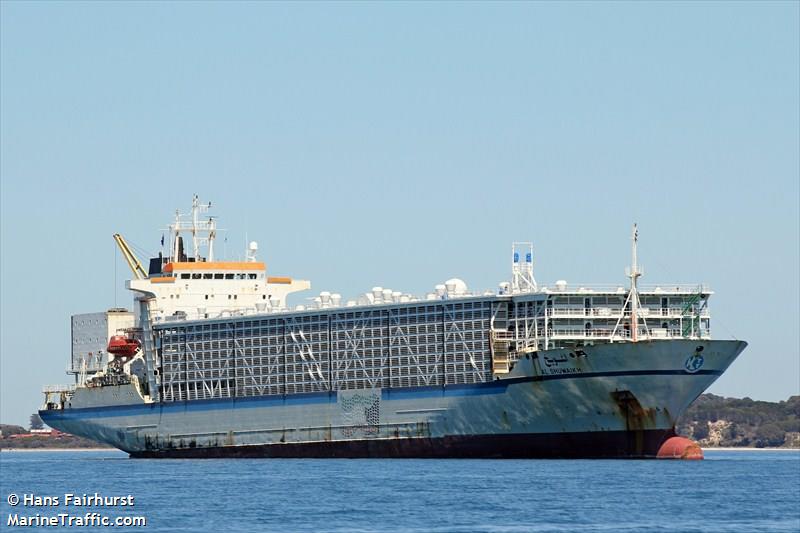Each year, millions of live farmed non-human animals are transported thousands of miles for slaughter—or to places where they will be fattened for slaughter. Live export, defined as “the commercial transport of livestock across national borders,” is still a widespread global occurrence, with around 3 million non-human animals shipped each year from Australia alone.

Every year 416 million animals are transported within Europe or across borders to third countries. The individuals that are shipped, usually cows, sheep, and pigs, face cramped and overcrowded spaces, extreme temperatures, and exhaustion and dehydration due to lack of food and water.

Secretly taken pictures also show lambs born on board. They lie on the feces-covered floor of the ship. Such births at sea are actually prohibited by law.
But animals are considered as things.

Furthermore, with no room to move, they often become drenched in their own and other individuals’ excrement. It’s estimated that more than 100,000 litres of urine and faeces accumulate on a typical live-export ship every day.
 Anonymous for the Voiceless
Anonymous for the Voiceless
Many of those who face this fate do not reach their final destination and instead die in transport. High levels of ammonia, due to the build-up of urine, cause the air to become toxic, choking and burning those on board.
In low temperatures, the container becomes like a freezer, and in higher temperatures, like an oven.
Live exports exist because we consider animals not as individuals but as things.
We must stop evaluating animals as our slaves.
We do not practice mass animal husbandry.
We operate a mass animal hell.
“Wherever we humans take the right,
to sacrifice an animal for our purposes,
We commit not only a wrong, but a crime”.
Karlheinz Deschner (German religion critics)
My best regards to all, Venus


